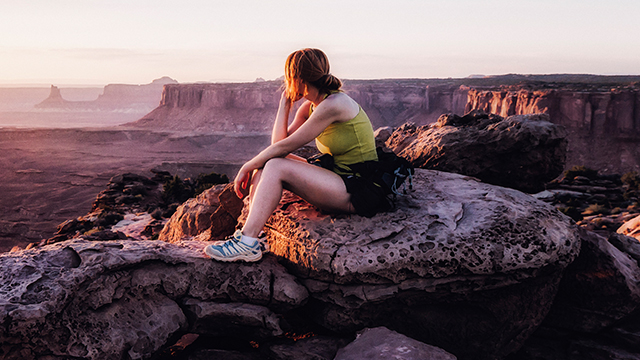
Between the damage done to public lands during the recent government shutdown and the Trump administration’s attempts to shrink the size of key national parks like Bear Ears, you’d be forgiven for believing the age of public lands was coming to a close. But the Senate just passed the largest public lands bill in a decade — a massive bipartisan effort that’s all too rare in this political climate.
Officially called the Natural Resources Management Act, the measure still has to pass the House of Representatives, but according to the Washington Post, the bill “enjoys broad support” in the lower chamber. Further, White House officials have indicated that President Trump will sign the bill when it’s brought to his desk, so feel free to start celebrating, and plan a trip or ten to state and national parks.
The measure combines roughly 100 bills together into a 662-page package that greatly expands public lands and protections all over the country. Given that the text is thicker than a Henry James novel, we wouldn’t expect you to read it. So what exactly is in the measure? Here’s what you need to know about the new public lands bill.
The bill enjoyed broad support.
The measure passed the Senate on Tuesday, February 12, in a 92-8 vote. Senate Leader Mitch McConnell said of the bill, “It touches every state, features the input of a wide coalition of our colleagues, and has earned the support of a broad, diverse coalition of many advocates for public lands, economic development, and conservation.”
Groups such as The Wilderness Society and Backcountry Hunters and Anglers—often at odds with one another regarding the use of public lands—were able to develop a package that satisfied practically all needs.
That didn’t stop several Senators from trying to tank the bill by attempting to add “poison pill” amendments. One such Senator is Utah’s Mike Lee, who blocked an effort to fast-track the bill in December and then said of the measure that it would actually hurt public lands. Per the Salt Lake Tribune, Lee said, “This bill perpetuates a terrible standard for federal-land policy in the West and particularly for the state of Utah.”
And yet it’s being near-universally applauded. Here’s why.
There’s something for everyone…
Per the Washington Post, there’s something for almost every Senator who voted “yes” on Tuesday.
What that means, in broad terms, is the following:
- Designating 1.3 million acres of land as wilderness, which means no motor vehicles, no roads, no significant modification of any kind.
- Adding almost 620 miles of rivers in seven states to the Wild and Scenic Rivers System, which protects them from damming and other development.
- Permanently reauthorizing the Land and Water Conservation Fund, the funding and grant program that allows government at all levels to acquire lands for recreation and/or protection.
- The creation of a “21st Century Conservation Service Corps, which will create programs where kids and veterans will work to restore national parks and other public lands.”
- Conservation measures, including withdrawing 370,000 acres of mining concessions around two major national parks (Yellowstone in Montana and North Cascades in Washington state) and using offshore drilling revenue for conservation efforts.
- All federal lands opened to hunting, fishing, and shooting “unless otherwise specified.”
There are also several state-specific measures that benefit Indigenous Americans, including the re-authorization of Alaska’s Native allotment program for Vietnam-era veterans. The original program “gave Native individuals title to 160-acre allotments, often where they hunted or fished” and this reauthorization guarantees that those who may have missed out due to military service get to take part; further, they won’t have to prove their personal connection to the land they choose.
Including five new monuments.
https://www.instagram.com/p/BmPe4h3libH/
Roughly half of the newly protected land is in Southern California and includes expansions of both Joshua Tree and Death Valley.
Five new national monuments will be created, according to the Associated Press. They are:
- The Medgar Evers Home in Mississippi
- Mill Springs Battlefield in Kentucky
- Camp Nelson in Kentucky
- Saint Francis Dam in California, which will also be a national memorial
- Jurassic in Utah, which will also be a national memorial
The Evers Home’s designation is a win for the legacy of the Civil Rights leader, who was assassinated in 1963 for his work. Both Kentucky monuments are important sites in the Civil War: Mill Springs is the site of the first decisive Union victory, and Camp Nelson was a strategic Union supply depot and operational base.
Per the National Parks Traveler, the bill also includes key expansions to protected areas by re-designating them as national historical parks. That effectively means that, instead of just the site itself being protected, the land surrounding the historical site will also be protected. The following sites are afforded extra protection:
- Ocmulgee Mounds National Monument in Georgia
- Saint-Gaudens National Historic Site in New Hampshire
- Golden Spike National Historic Site in Utah
- Shiloh National Military Park in Tennessee, which was previously a historical park but will now include battlefields at Davis Bridge, Fallen Timbers, and Russell House
Here’s when it’ll kick in.
The House of Representatives takes a weeklong recess (give or take) each month; February’s recess begins on Friday the 15th and ends on Monday the 25th. They’ll vote on the measure after they’re back in session, and it’ll go to the president’s desk for ratification, so we could be celebrating these vast new public lands sooner than you think.
